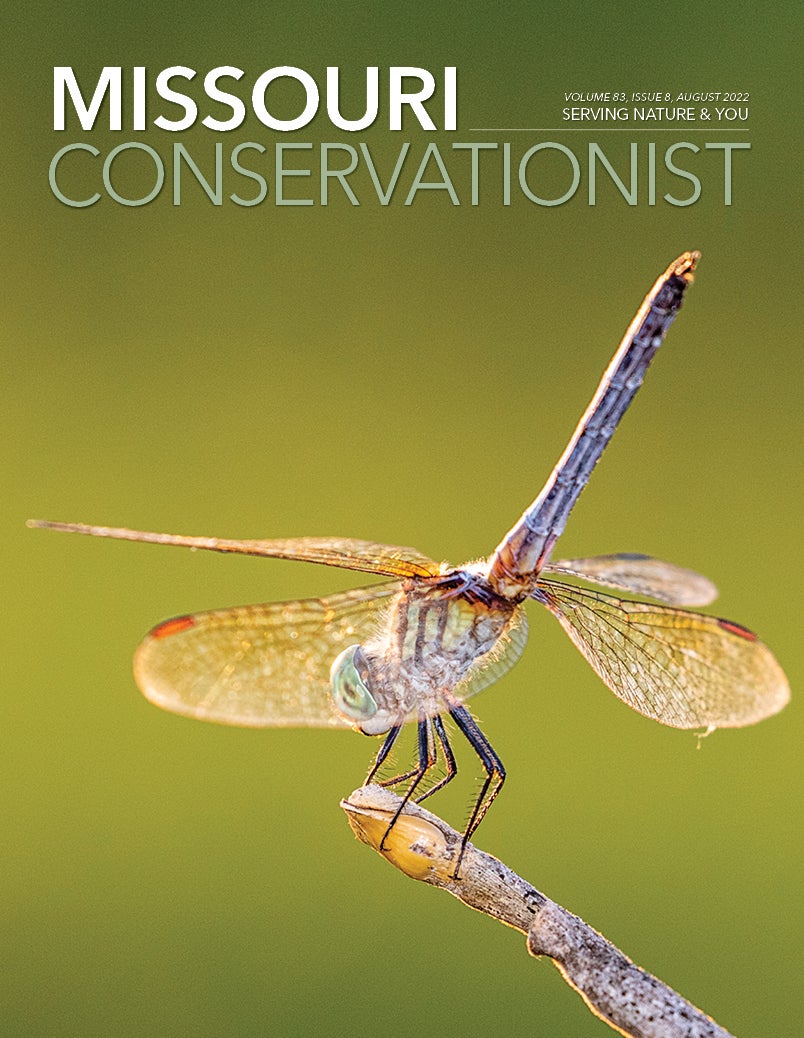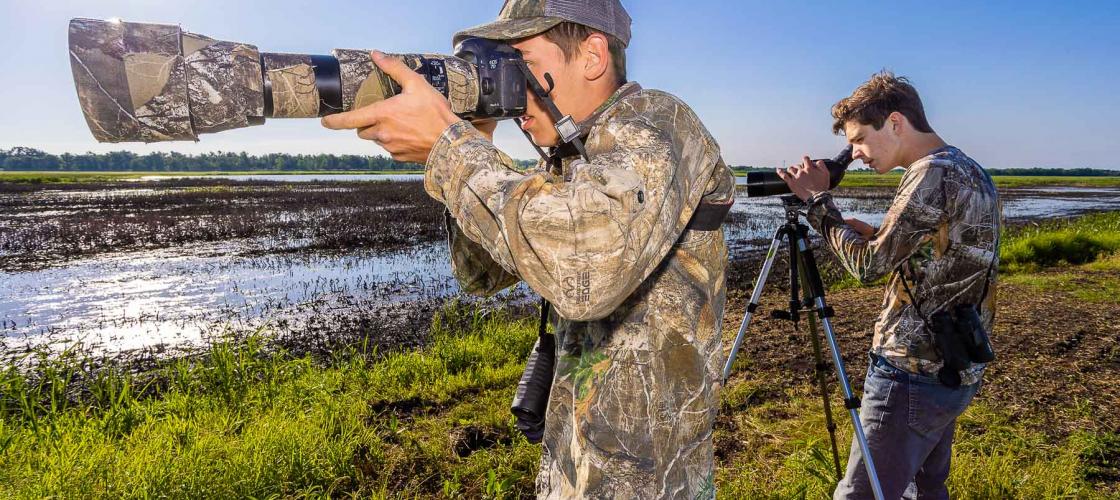
Close your eyes and take a moment to visualize your favorite place. Concentrate on the sights and sounds.
If you’re like many people, the place you imagined was somewhere outdoors. And there’s a good reason why: It turns out spending time in nature provides physical, mental, and emotional benefits. But what wasn’t evident until recently is that making connections with wild places is just as important for nature itself.
One of the goals of MDC’s Wetland Planning Initiative is to strengthen people’s connections to nature. To better understand the role wetlands play in this regard, MDC surveyed 20,000 Missouri residents. Of the survey respondents, 85 percent reported that they had participated in outdoor recreation in the previous year, and 68 percent had visited a wetland. While respondents appear to be spending time in wetlands, only 19 percent participated in wetland conservation in the past year.
Paths to Involvement
In surveying Missourians, we discovered three main paths that make people more likely to get involved in wetland conservation. First, individuals who pursue activities that depend on the unique characteristics of wetlands are more likely to participate in wetland conservation. Waterfowl hunters are nearly five times more likely than others to engage in wetland conservation, and wildlife watchers are three times more likely than others to do so. Second, people with strong personal connections to wetlands are more likely to participate in wetland conservation. And third, individuals who are more aware of the benefits wetlands provide — such as clean water, flood mitigation, and wildlife habitat — are slightly more likely than others to participate in wetland conservation.
Involvement in conservation is especially important for Missouri’s wetlands. Only 13 percent of Missouri’s original wetlands remain, and landscape alterations severely affect those. Levees, dams, and other human-made changes have reduced river connections to floodplain wetlands and altered the timing, duration, and magnitude of flood pulses that create and sustain wetland habitats beneficial to fish and wildlife. We now must look for creative ways to either restore or emulate river system processes. In other words, it requires conservation.
To get a better perspective about the role wetlands play in connecting people to conservation, I spent time with several birders, hunters, and conservationists.
Birding Brothers
I met high school-aged brothers Oliver and Henry Gorski for a morning of birding at The Audubon Center at Riverlands, located along the Mississippi River near St. Louis. Watching ducks in the distance, they shared how their mom decided to put out a bird feeder and watching birds at the feeder piqued their curiosity. Around this time, COVID hit, and they were looking for things to do. Neither of them could drive, so they talked their grandmother into taking them out looking for birds. For them, birding provided a great way to get out in nature and offered a bit of an escape. Oliver commented that it was more than just seeing birds, it was the experiences while birding that were most important. They also enjoyed the challenge and competition of seeing how many different birds they could identify.
As we walked a trail later in the morning, there were longer pauses in the conversation as both brothers reflected on what birding meant to them. After one of these pauses, Henry stopped and quietly explained that it’s also about the people. Birding was clearly something he and Oliver shared as brothers, but it also introduced them to a broader community. Their neighbor, also a serious birder, introduced them to eBird, an online program for birders. Through eBird and Discord, an Instagram group of birdwatchers in the St. Louis area, they have connected with other birdwatchers. Even while we were out, some friends they had made through birding pulled alongside to share what they had seen that morning. Now the brothers are sharing their passion by mentoring children through the Missouri Young Birders Program.
This is the third article of three highlighting a series of assessments that are the first steps in implementing MDC’s Wetland Planning Initiative. The initiative is guided by a strategic guidance document, which articulates our philosophy on how we plan to approach wetland conservation in the next 25 years, and an implementation plan, which serves as an invitation to partners and stakeholders to engage with us in wetland conservation.
Before pursuing these goals, we must first understand what changes have occurred, our status, and future opportunities. We have conducted three assessments to provide this understanding: a bottomland functional assessment, a life history assessment of wetland-dependent animals, and a social assessment. This article highlights some of this important work encompassed in the social assessment. The first article, Meaningful Connections, appeared in the February issue of Missouri Conservationist, while the second, Assessing the Wetlands, appeared in the May issue. Find both articles online at mdc.mo.gov/conmag.
From Stares to Friendships
A native of suburban Chicago, Nathan Nozime finds duck hunting to be not only a great way to spend time in nature, but a challenge that also offers a break from the stressors of everyday life.
Following a morning of duck hunting that we shared at Fountain Grove Conservation Area (CA), Nathan discussed the awkward feeling as a young Black man entering the draw room for the first time. He imagined other hunters thinking, “Who are these clowns?” With a laugh, he recounted the time his cousin overheard someone at a party in Columbia talking about seeing rapper Snoop Dogg hunting at Fountain Grove CA.
With time, stares turned into friendships. Nathan highlighted the many acts of kindness he has experienced at Fountain Grove CA, like the time an older hunter gave him a hunting jacket seeing that his was worn out.
One of the things Nathan values most about duck hunting is how it brings people together. To make his point, he asked if I thought the two of us — an old white guy and young Black man — would be enjoying lunch together if it wasn’t for duck hunting. Today, duck hunting provides the bond that holds many of his friendships together.
It’s too soon to know if the personal bonds to wetlands Henry, Oliver, and Nathan are beginning to forge will lead to involvement in wetland conservation, but their stories reflect the journeys taken by birder Mary Nemecek, and waterfowl hunter Renee Hahne, who are both now wetlands conservation leaders.
Battling Windmills
As a child growing up in the Kansas City area, Nemecek wasn’t exposed to many wildlife-related recreational activities. It was the gift of a bird feeder shortly after college that sparked her interest in birding, and this in turn started her down the path towards conservation. During a beautiful late November morning of birding at Loess Bluffs National Wildlife Refuge (NWR), she pointed to the nearby bluffs and noted that an energy company had once proposed building a wind farm there. She was shocked that giant windmills may be placed in the path of the hundreds of thousands of migrating waterfowl and other birds. She sprang into action — and with others — eventually prevailed in preventing the proposed wind farm. What started out as a fight to protect Loess Bluffs NWR and the birds that depended on it turned into a vocation.
For Nemecek, conservation kept coming back to personal responsibility. “What are we doing on our watch?” she said. It was also about connections to future generations and what we’re doing for them. On a very personal level, it was about what she was doing for her 11-year-old son and ensuring he and others would be able to experience the same connections to nature that mean so much to her. Each year, Nemecek purchases two Federal Duck Stamps, one for herself and one for her son. She hopes this growing collection of stamps will serve as a reminder to him of the importance of personal connections to conservation. The revenues generated from Federal Duck Stamp sales are used to purchase habitat for waterfowl and other migratory birds.
Growing the Community
As Missouri’s Ducks Unlimited (DU) chairperson, Renee Hahne is only the second woman to serve in the role and one of fewer than 20 women to have done so nationwide. As dawn turned to day during a duck hunt at Eagle Bluffs CA, Hahne reflected on her journey that led to her position with DU, a journey that started with hunting and fishing at an early age near the Wisconsin River in central Wisconsin. Although Renee’s dad introduced her to waterfowl hunting while in grade school, he was often away as an over-the-road truck driver. While neither anyone else in her family nor her friends duck hunted, friends of her parents stepped up to take her along, further developing her passion for the sport. Her interest in waterfowl hunting and a more general concern about water led her to obtain a college degree in limnology, the study of inland waters, and later to join DU.
Like Hahne’s start in duck hunting, it was through the help of others that she navigated the path from waterfowl hunting to wetland conservation. It was the friends that invited her to the first banquet, the Columbia DU committee members that encouraged her to volunteer, and then others who encouraged her to take on more leadership roles that paved the way for her. With excitement in her voice, she shared her vision of growing the wetland conservation community. If she could provide others the chance to become involved, and help them understand the difference they could make, she was confident that together DU members could accomplish amazing things.
Strengthening Connections
Previous research has demonstrated the benefits of spending time in nature. Simply put, if you spend time in nature, you’ll likely feel better. Our survey results and the conversations with these five amazing individuals highlighted how wetlands can provide a great place to connect with nature, and as we strengthen these connections, we all have the potential to play a more active role in ensuring future generations can experience these benefits as well. I appreciated a quote Mary Nemecek shared with me, “You can’t feel sorrow for something you don’t know.” It all starts by strengthening our connections to nature.
Did you notice the other underlying theme that emerged from the conversations? By strengthening our connections to nature, we can strengthen our connections with one another. This is more important than ever as public health experts warn we are facing a new hidden epidemic, loneliness. Research has shown that the associated reduction in life span associated with loneliness is similar to that caused by smoking 15 cigarettes a day and higher than the mortality impacts of obesity and lack of exercise.
Now think of Henry and Oliver and the role birding has played in strengthening their bonds with one another, their grandmother, and wider circle of birders. Think of Nathan highlighting how duck hunting brings people with diverse backgrounds together. Think about Mary and all that she does with her son’s future in mind. Finally, think about Renee and the trailblazing role she is playing helping grow the wetland conservation community. When strengthening our connections to nature, we also can strengthen our connections to one another.
At the start of the article, I had asked you to close your eyes and visualize one of your favorite places. Now close your eyes one more time and imagine yourself in the future. If you’ve never visited a wetland before, can you picture yourself making that first trip to see what you might discover and the people you might meet? If you’re a birdwatcher or duck hunter, can you see yourself reaching out to take someone along? Can you see yourself finding common purpose with others helping to conserve wetlands and making Missouri a better place for future generations? Can you feel the power of people connecting to nature?
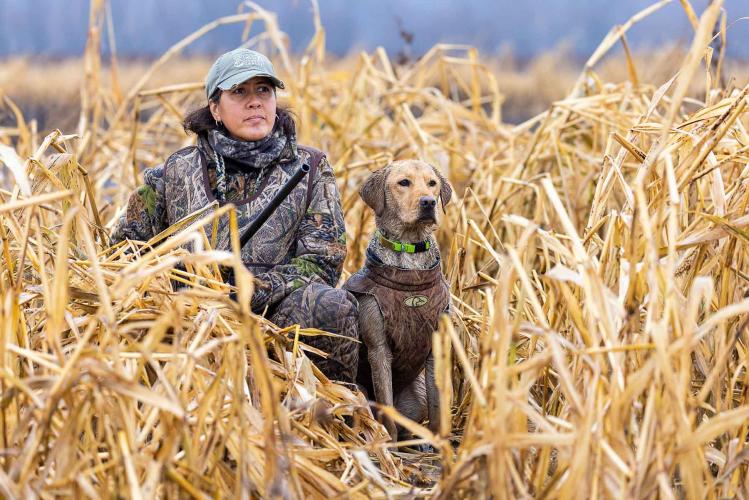

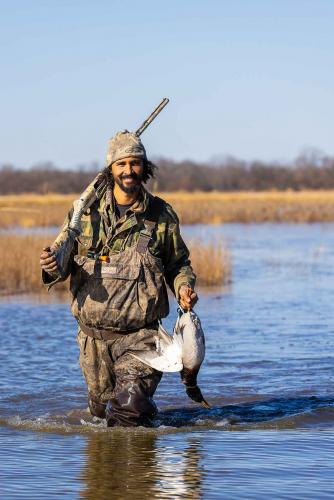
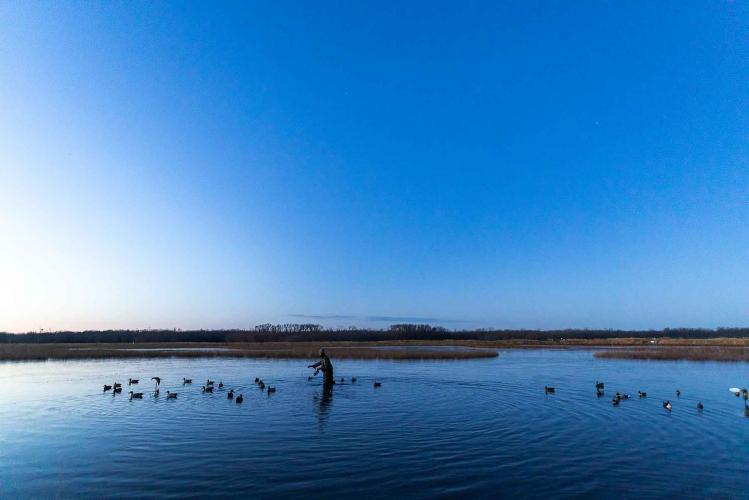

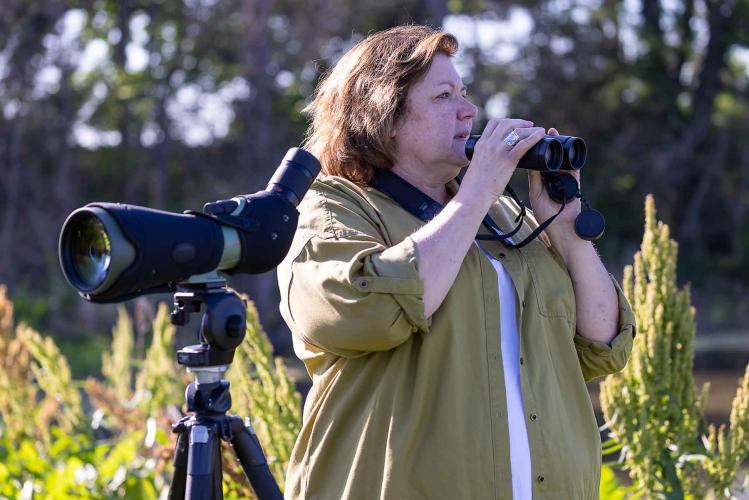



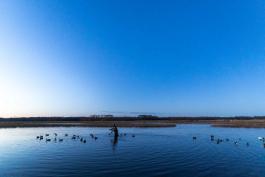

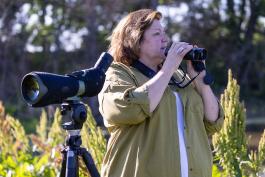
Also In This Issue

Working the night shift to keep nature clean

A monthly to-do guide to help you get the most out of Missouri’s hunting seasons
And More...
This Issue's Staff
Editor - Angie Daly Morfeld
Associate Editor - Larry Archer
Photography Editor - Cliff White
Staff Writer - Kristie Hilgedick
Staff Writer - Joe Jerek
Staff Writer – Dianne Van Dien
Designer - Shawn Carey
Designer - Marci Porter
Photographer - Noppadol Paothong
Photographer - David Stonner
Circulation Manager - Laura Scheuler






















